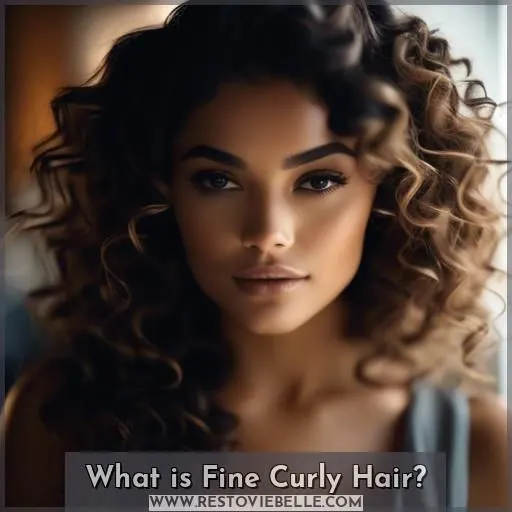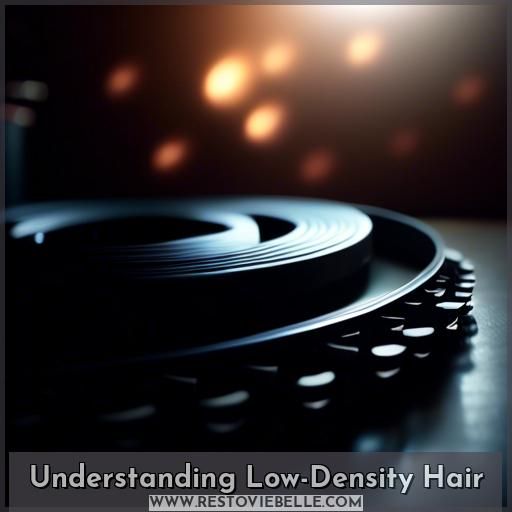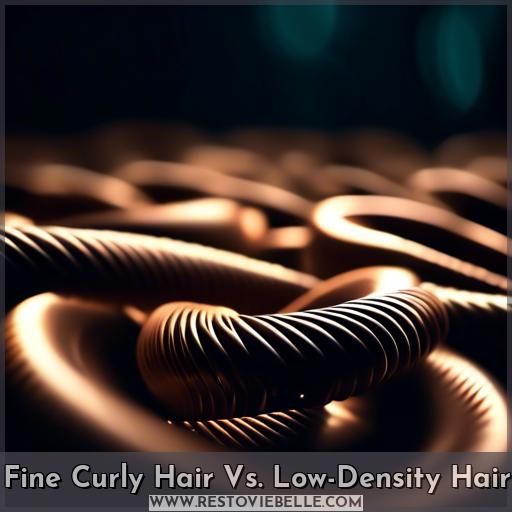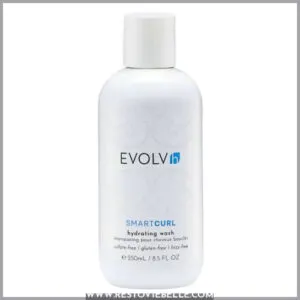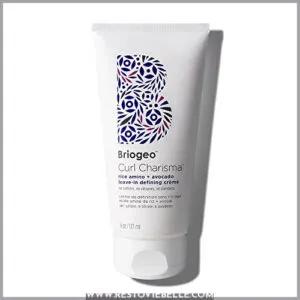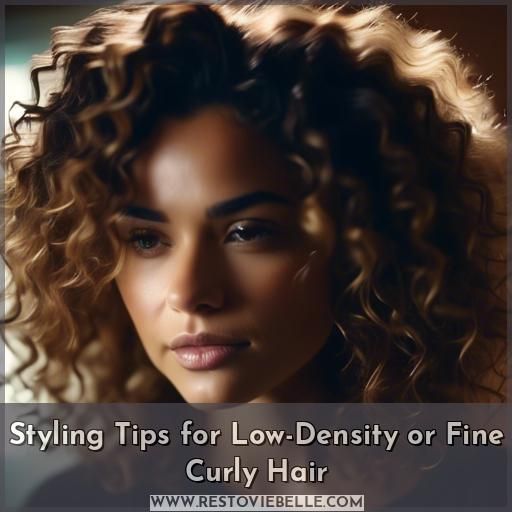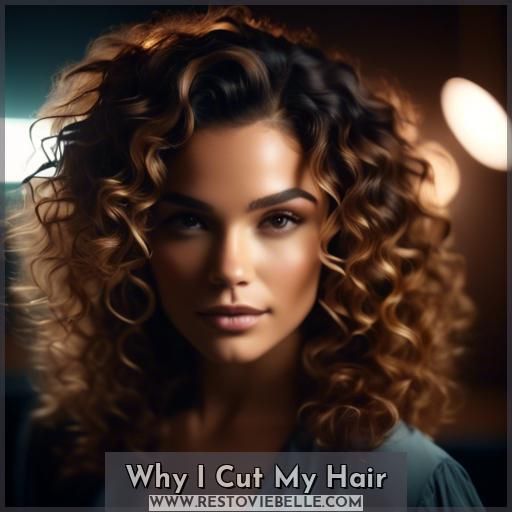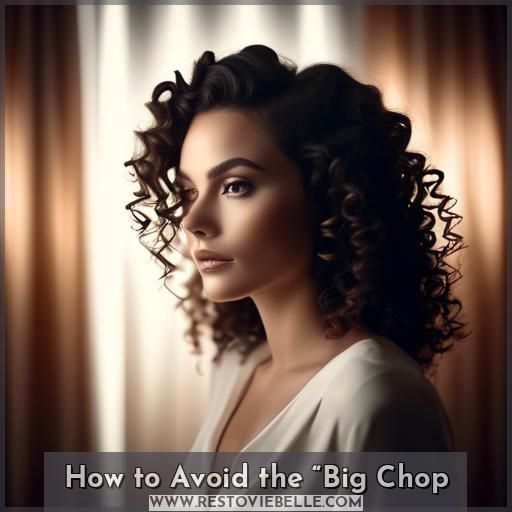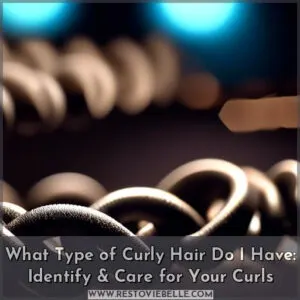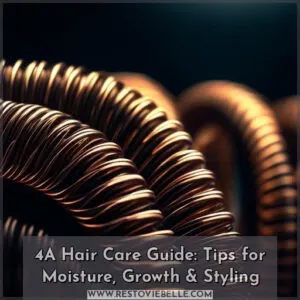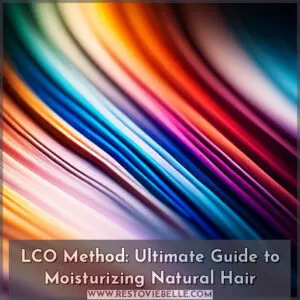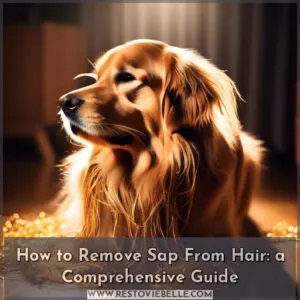This site is supported by our readers. We may earn a commission, at no cost to you, if you purchase through links.
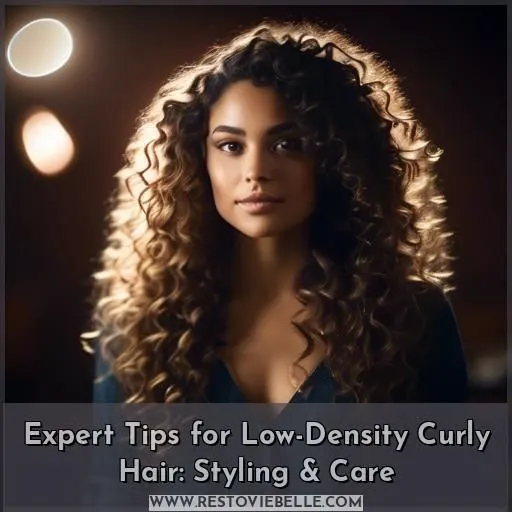
If you have low-density curly hair, it’s imperative to select routines and products that are specifically designed to address your hair’s unique characteristics. Your curls are distributed widely, making them susceptible to breakage and lacking in fullness. Choose lightweight, volumizing products such as EVOLVh SmartCurl Hydrating Wash, Briogeo Curl Charisma Curl Cream, and Jamaican Black Castor Oil Hair Mask to provide nourishment and fortification without overburdening your hair.
When styling, refrain from using heavy products or using heat, as this can damage your hair and compromise its inherent beauty. By implementing these recommendations, you will improve the health and appearance of your low-density curls and gain a deeper understanding of how to achieve your most desirable curls yet.
Table Of Contents
Key Takeaways
- Choose lightweight, volumizing products to avoid weighing down low-density curly hair.
- Avoid using heavy styling products or heat, as these can damage the hair.
- Focus on deep conditioning and low-poo methods for hair growth.
- For styling, use a blunt cut and avoid layers that may thin the ends.
What is Fine Curly Hair?
Fine curly hair is characterized by a smaller diameter than coarse hair, individual strands that are thinner, and a tendency to be fragile and susceptible to damage. It also has poor moisture retention and may require volumizing routines to achieve the desired look.
Styling techniques for fine curly hair include using lightweight products, applying only one styling product (such as mousse or gel), using a small amount of conditioner, and avoiding heavy styling products that weigh down the hair.
Understanding Low-Density Hair
Low-density hair is characterized by strands that are spread far apart, making the scalp more visible. It’s also known as thin curls. This type of hair is fragile and susceptible to damage, as it has a smaller diameter than coarse hair and individual strands are thinner. It struggles with volume and doesn’t hold moisture well.
To care for low-density curly hair, use lightweight products to avoid weighing it down, and apply only one styling product at a time. Use a small amount of conditioner, and opt for volumizing products. Deep condition on dirty hair and avoid applying styling products directly to the roots.
Style hair away from the scalp and avoid clumps that are too big. Squeeze out excess water after washing and fluff the hair with fingers or a comb/pick.
Fine Curly Hair Vs. Low-Density Hair
Fine curly hair and low-density hair have distinct characteristics that require different care and styling techniques. Fine curly hair has a smaller diameter, thinner strands, and struggles with volume. Low-density hair, on the other hand, has strands spread far apart, making it susceptible to damage.
In terms of styling, fine curly hair benefits from lightweight products, while low-density hair requires volumizing products. For hair growth, focus on low-poo methods and deep conditioning.
When cutting, aim for a blunt cut and avoid layers that may thin ends. Remember to show inspiration photos and communicate desired length to your stylist.
Top 3 Best Shampoos for Low-Density Curly Hair
Regarding low-density curly hair, selecting an appropriate shampoo is essential for preserving healthy curls. Here are the top three highly recommended shampoos for low-density curly hair:
- EVOLVh SmartCurl Hydrating Wash: This shampoo produces a rich lather and leaves the scalp thoroughly cleansed, making it perfect for low-density hair. It isn’t as moisturizing as other curl lines, which can be beneficial for fine hair, and it has a light formula that has received the approval of the curly girl method.
- Briogeo Curl Charisma Rice Amino Avocado Leave-In Defining Cream: Although technically a leave-in cream, this product can also be utilized as a shampoo for low-density curly hair. It’s hydrating and offers good volume and body without weighing the hair down.
- Jamaican Black Castor Oil Hair Mask: This hair mask is renowned for its nourishing and softening properties, which can be beneficial for low-density curly hair. It’s crafted from cold-pressed and cold-processed castor oil, which is abundant in fatty acids and antioxidants that can contribute to strengthening and encouraging hair growth.
When using these shampoos, it’s vital to adhere to recommended styling and care guidelines for low-density curly hair, such as employing lightweight products, abstaining from using heavy styling products, and being gentle when detangling and styling the hair.
1. EVOLVh SmartCurl Hydrating Wash
EVOLVh SmartCurl Hydrating Wash is a shampoo designed for curly, thick, or coarse hair that craves moisture and hydration. It gently cleanses while infusing essential nutrients for visibly stronger, shinier, and softer strands, resulting in clean, frizz-free, perfectly defined curls.
The shampoo is formulated with natural and organic ingredients, including Kiwi Seed Oil, Sweet Almond Oil, and various plant extracts, which help hydrate hair and protect against split ends. It’s free of sulfates, parabens, phthalates, propylene glycol, silicones, and synthetic fragrances, making it suitable for those with sensitive scalps or allergies.
The shampoo is lightweight and doesn’t weigh hair down, allowing for increased volume and bounce. It’s also cruelty-free and vegan, aligning with ethical and sustainable beauty standards.
Best For: Curly, thick, or coarse hair that needs moisture and hydration.
- Gently cleanses without stripping beneficial oils
- Infuses essential nutrients for increased strength, shine, softness, and maximum hydration
- Free of sulfates, parabens, phthalates, propylene glycol, silicones, gluten, synthetic fragrance, GMOs, and cruelty
- Some users found the product to be too drying
- Some users found the product to be too expensive
- Not meant for fine, straight hair
2. Briogeo Curl Charisma Curl Cream
Briogeo Curl Charisma Rice Amino + Avocado Leave-In Defining Cream is a curl-defining styling cream that helps to smooth and define curls and coils for stunning styles. It’s formulated with 95% naturally derived ingredients and is vegan and cruelty-free.
The key ingredients include Rice Amino Acids, Avocado Oil, Tomato Fruit Ferment, and Quinoa Extract, which help to seal the hair’s cuticle, enhance moisture retention, and support curl formation.
This cream can be used in a multitude of ways, such as to enhance curls or slick back styles, and it features a light and creamy texture that dries down soft, clear, and smooth. It’s free from silicones, phthalates, parabens, DEA, and artificial dyes.
Best For: Those with wavy, curly and coily hair texture types (2A to 4C)
- 94% naturally derived
- Safe for color-treated, chemically-treated, and relaxed hair
- Provides soft, flexible control
- Not specified
3. Jamaican Black Castor Oil Hair Mask
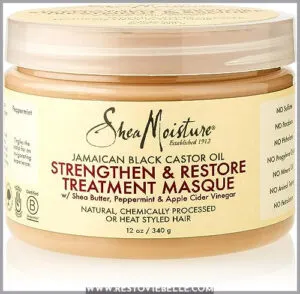
Jamaican Black Castor Oil Hair Mask is a deep conditioning and hydrating hair treatment that’s ideal for curly hair. It’s formulated with Jamaican Black Castor Oil and Shea Butter, which help to strengthen and restore damaged or chemically processed hair. The mask replenishes moisture and softens hair, supporting elasticity and reducing breakage and shedding.
Key benefits of the Jamaican Black Castor Oil Hair Mask include:
- Deep conditioning and hydration for curly hair
- Strengthens and restores damaged or chemically processed hair
- Replenishes moisture and softens hair
- Supports elasticity, reducing breakage and shedding
- Formulated with Jamaican Black Castor Oil and Shea Butter
- No silicones, sulfates, parabens, phthalates, or petrolatum
- Sustainably produced and cruelty-free
The mask is suitable for those who regularly color, straighten, perm, or heat-style their natural hair, as well as for coily, curly, or wavy natural styles. To use the mask, start your routine with the SheaMoisture Jamaican Black Castor Oil Strengthen & Restore Shampoo. Then, apply a generous amount of the hair mask, focusing on ends to mid-lengths. Comb through for even distribution. Place a plastic cap over your hair and sit under a warm dryer for 10-15 minutes, or leave it on for up to 30 minutes without heat. Rinse thoroughly.
The Jamaican Black Castor Oil Hair Mask is available in a 11.99 ounce container with dimensions of 3.5 x 3.5 x 3 inches. It’s recommended to use the mask weekly or every other week for best results.
Best For: Those with curly hair who regularly color, straighten, perm, or heat style their hair.
- Strengthens and restores damaged or chemically processed hair
- Replenishes moisture and softens hair
- Supports elasticity, reducing breakage and shedding
- Not for everyone, especially those with low porosity or protein sensitive hair
- Can be too heavy for fine hair
- May leave a slight residue
Styling Tips for Low-Density or Fine Curly Hair
- Volumizing Products: Use lightweight volumizing products to avoid weighing down your hair. Opt for mousses, foams, or gels that provide texture without adding excess weight.
- Preventing Clumps: Squeeze out excess water after washing and fluff your hair with fingers or a comb/pick to prevent clumps from getting too big.
- Avoiding Heat Damage: Heat styling can damage curly hair, so avoid using heat tools directly on your hair. Instead, use a heat protectant and style your hair when it’s dry.
- Avoiding Bleach Damage: Bleach can further damage already fragile curls. If you must bleach, make sure your stylist uses a bond builder and follow a prescribed at-home care regimen.
- Layers: Long layers can add volume to your hair without thinning the ends. If you’re considering a cut, ask for a blunt cut and avoid slicing or thinning.
- Wet Cut: When cutting thin curly hair, it’s best to cut it wet, as it will be more elastic and less prone to breakage.
- Dry Shampoo: Use a lightweight dry shampoo to add volume and texture to your hair without weighing it down.
- Volumizing Foam: Apply a volumizing foam to your roots before blow-drying for added lift and volume.
Do’s & Don’ts When Styling Low-Density Curls
To attain optimal outcomes with low-density curly hair, it’s imperative to adhere to specific styling approaches. Commence by untangling your hair with pre-poo oils prior to cleansing. Utilize a lathering shampoo and deeply condition on a weekly or bi-weekly basis. Rinse and style your hair upright to prevent tangles.
Towel dry your hair and mist water where necessary before applying styling products. Employ a styling brush to distribute products uniformly, concentrating on diminutive clumps rather than expansive ones. Volumizing products can assist in adding fullness, but refrain from applying them directly to your roots.
Bear in mind, moderation is key when it comes to styling low-density curls.
Why I Cut My Hair
You decided to cut your hair for several reasons. First, you wanted to balance the length of your long hair with the fullness at the ends. Second, your low-density curls tended to clump together, giving the appearance of fewer curls.
As your hair grew longer, it became sparse, which you found unappealing. Additionally, you’d damaged ends and old highlighted strands that needed to be removed.
You opted for a curly girl method haircut, which involved trimming several inches off to even out your curls and keep mostly all one length. You skipped face-framing pieces and chose a stylist who understood curly hair shrinkage.
How to Avoid the “Big Chop
To avoid the Big Chop, you can follow these steps:
- Gradual progression: Regularly trim your hair as it grows to prevent the need for a major cut.
- Avoid heat and bleach: Reduce damage to new growth by avoiding heat styling and bleach.
- Frequent trims: Get trims every 8 weeks to maintain a healthy length.
Conclusion
If you have low-density curly hair, it’s imperative to customize your routine to your hair’s specific requirements. Opt for weightless, volumizing products such as EVOLVh SmartCurl Hydrating Wash, Briogeo Curl Charisma Curl Cream, and Jamaican Black Castor Oil Hair Mask.
Refrain from using heavy products and heat styling. By adhering to these guidelines, you can improve the well-being and allure of your low-density curls, ultimately achieving the coveted look for your distinctive hair type.

